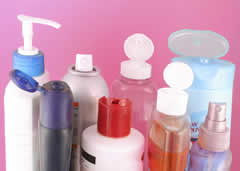Pacific Southwest, Region 9
Serving: Arizona, California, Hawaii, Nevada, Pacific Islands, Tribal Nations
Healthy Hair Care and the Environment
Know What’s In Your Hair Products

Every day many of us use personal care products that contain potentially harmful ingredients. Think about how many personal care products you use in a single day, a year and over your lifetime. Small amounts of toxic chemicals add up and can accumulate in our bodies.
Of the 10,500 chemical ingredients used in the personal care products, just 11% have been assessed for health and safety. Hundreds of chemicals – some safe and some known to be hazardous – are present in our personal care products. Because countless new compounds are developed each year, it’s hard for consumers to know about them all. The good news is that there are some easy and affordable alternatives available to every consumer.
Many companies are now making less toxic products and are striving to introduce nontoxic products. Nonprofit organizations such as the Campaign for Safe Cosmetics encourage the cosmetics industry to pay attention to consumer demands for safer products.
This guide aims to give you some general information on natural hair care techniques, to help point you in the right direction when selecting products and to inspire you to make a few small changes in your hair care and styling routine that will be healthier for your body.
Products Labeled as Natural/Organic
The word “natural” on a product label doesn’t always mean it’s safe or natural. Many products are being marketed as natural and/or organic but have chemical ingredients that raise health concerns. Reviewing the ingredients on the label is one way to be sure the product is true to its claims. Be aware that potentially problematic chemical ingredients can hide behind the word “fragrances.” Fragrances are considered trade secrets and the ingredients within fragrances are not required by law to be revealed and may represent many ingredients, sometimes hundreds. “Unscented” and “fragrance free” have no legal definition, these words can be used in a variety of ways. “Unscented” or “fragrance free” labels do not guarantee that the product doesn’t contain potentially toxic chemicals. Before purchasing consumer products you may want to seek out consumer information resources such as the Environmental Working Group’s Skin Deep Safety Database ![]() or Goodguide
or Goodguide ![]() to research products to find the safest alternatives.
to research products to find the safest alternatives.
| Pacific Southwest NewsroomPacific Southwest Programs | Grants & FundingUS-Mexico Border | Media CenterCareers | About EPA Pacific SouthwestA-Z Index |
